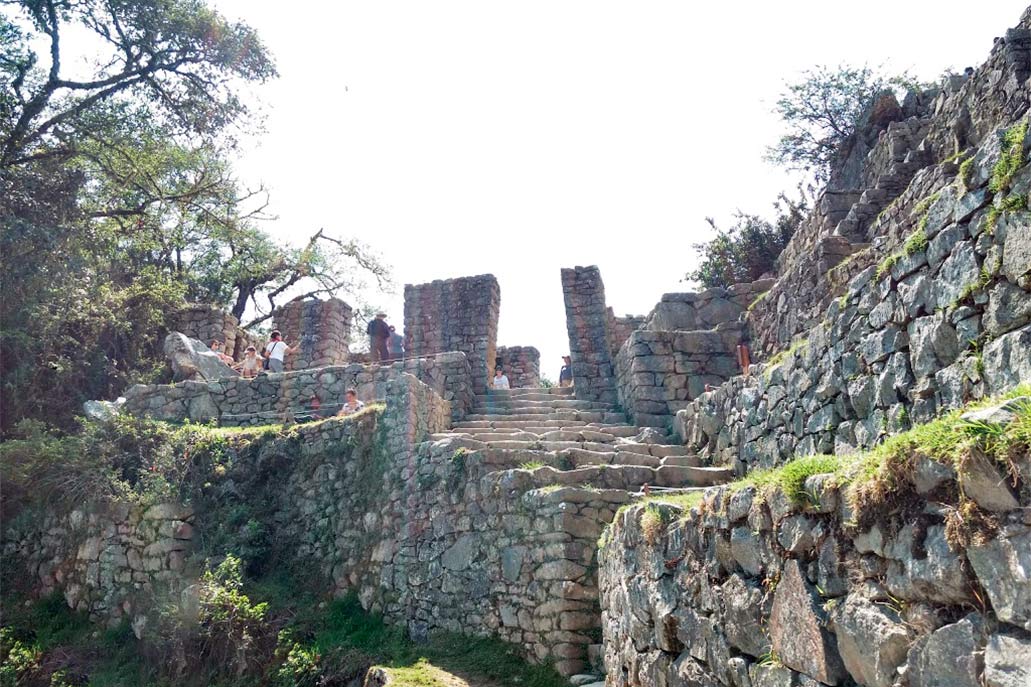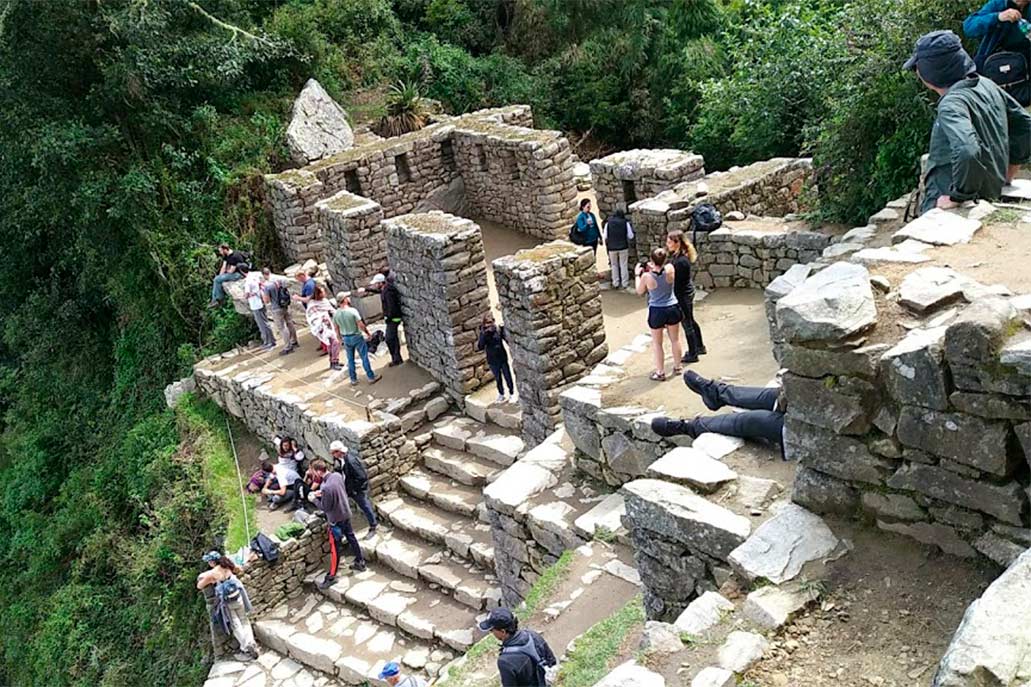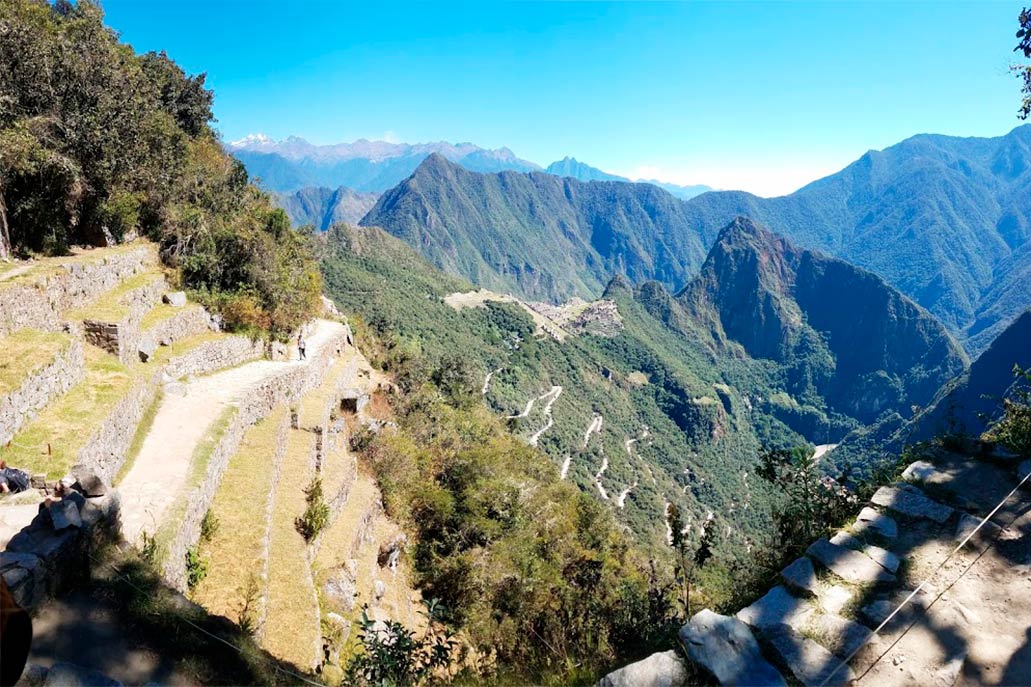The Intipunku
The Intipunku was the gateway to Machu Picchu in the time of the Incas. Not many tourists know it because they are at the top of the citadel. To get there there are two options: take the Inca Trail (4-day hiking route) or take the 2-hour walk from the current entrance gate to Machupicchu.

Content
The Inca gate to Machu Picchu
The Intipunku is a stone construction that served as an entrance and exit door to the citadel of Machu Picchu during the Inca Empire. It is located in the highest part of the archaeological site, following the Inca roads that lead to the city of Cusco.
It is made up of several stone structures such as walls, windows and niches arranged in such a way that they receive the sun’s rays at dawn. From there you have a panoramic view of the entire citadel. Due to this, it also fulfilled a surveillance function.
Currently tourists do not enter Machu Picchu for this construction. They do it by an alternate route located in the lower part of the archaeological site. From there it is possible to take a walk of almost 2 kilometers until reaching the Intipunku, at the top of Machupicchu.
The sun gate

Intipunku is a Quechua word that means ‘Gate of the sun’. During the summer solstices through its windows the rays of the sun enter mysteriously illuminating the enclosure. Due to this it is presumed that in addition to fulfilling the function of entrance to Machu Picchu, it also served as a religious space dedicated to the sun.
During Inca times the Intipunku was guarded by guards. The walkers who traveled the qhapac ñan (Inca roads) entered Machu Picchu there. The same Inca emperor was transported by several people along these roads. That is why the Intipunku, the gateway to the sacred city, is important.
The hike to the top
The way more tourists visit the Intipunku is by hiking uphill for 2 kilometers from the archaeological site of Machu Picchu.
This route is free for everyone. They can do it with any of the entrances to Machu Picchu. It crosses the network of Inca roads (qhapac ñan) that lead to the city of Cusco itself. However, once in the Intipunku it is no longer allowed to continue with the path.
The hike is easy. Visitors in good physical condition can complete it in just 1 hour. Tourists who are not in good physical condition can take 2 hours. The roads are wide and safe. They are made of stone and offer, as you ascend, incredible landscapes of all Machu Picchu.
Along the way you can also appreciate various species of flowers, trees, birds and insects. The many species of orchids that flourish there stand out. It is also possible to observe the giant hummingbird, the Andean parakeet, the blue swallows and a variety of butterflies.
Among the mammals that can be observed on the walk, the vizcachas (wild Andean rodents) or, if you are lucky, the famous Andean bear stand out.
The Inca trail
The 4-day Inca Trail to Machu Picchu is the other way to appreciate the Intipunku. This hiking route crosses 39 kilometers of Inca trails, the famous qhapac ñan.
This section of Inca roads was built by the Incas at the end of the 15th century in order to connect Cusco with the new citadels created such as Llactapata, Runkurakay, Sayacmarca, Wiñayhuayna and, of course, Machu Picchu.
On the last day of the Inca Trail, after touring the Andean mountains and the jungle peaks of Cusco, the tourist arrives at Machu Picchu just as the Incas did. That is, through the Intipunku. This panoramic first view of the Inca citadel is amazing.
The Inca Trail to Machu Picchu can only be done by purchasing a tour through an authorized tourism agency. It cannot be done on your own, without the permits issued by tourist agencies. Due to high demand, this tour must be purchased online 6 or 7 months in advance.
Incredible landscapes

The Intipunku is located at 2,745 meters above sea level, about 300 meters higher than the archaeological site of Machu Picchu. From there you have one of the best panoramic views of the Inca citadel and its surroundings: the Huayna Picchu mountain, the Machupicchu mountain, the Putucusi mountain, the town of Aguas Calientes, the Vilcanota river and more.
More information about the Intipunku
To visit the Intipunku with your entrance to Machu Picchu you must go to the ‘House of the guardian’ and from there follow the route of the Inca roads in a straight line. The paths are well defined and with signs along the route, so getting lost is almost impossible.
In February, the rainiest month of the year, both the Inca Trail and the route to the Intipunku from Machu Picchu; they remain closed to the public. Heavy rains can cause landslides on the route, putting visitors at risk.
The Intipunku can be visited from 6 in the morning until noon. Tourists can stay there until 1pm at the latest. From then on they must descend towards the archaeological site of Machu Picchu.
In addition to the Intipunku, the other short hiking route that can be done in Machu Picchu is the walk to the Inca Bridge. The other two walks are the ones that lead to the top of the Huayna Picchu mountain and the Machupicchu mountain. However, these routes require the purchase of an additional ticket.